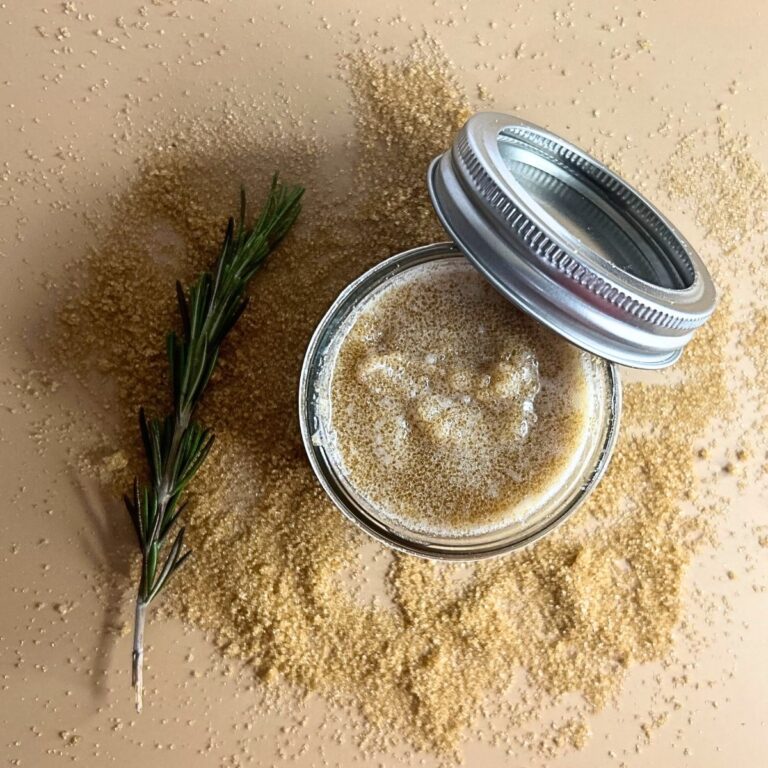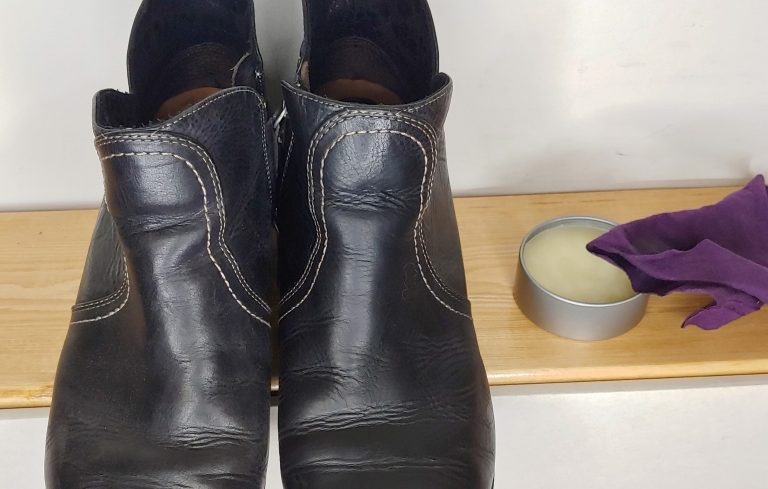This post may contain affiliate links.
Add these simple instructions for building removable interior storm windows (or “window insert”) to your energy efficiency checklist this winter!
One of the best things you can do to improve the efficiency of your home and save costs on heating is to improve the insulation value of your windows. This is especially true in older homes or those built more quickly without an eye for energy efficiency.
It’s also true if you’ve invested in energy upgrades like solar panels and want to make the most of them.
If purchasing new energy-efficient windows isn’t in your budget, you might consider installing storm windows outside your existing windows to add another layer of heat retention and cold blocking. But even a storm window can be cost-prohibitive and complicated to install.
DIY Interior Storm Windows
As a nice alternative to expensive construction or cheap solutions, consider building your own interior storm windows (or “window inserts”). This low-cost alternative provides effective insulation without spending a fortune, and can look very nice with just a little attention to aesthetics.
Here we show you how to build and install removable interior storm windows or window inserts, made with the same shrink film included in your typical window insulating kit.
By building a simple wooden frame and attaching the shrink film found in a window insulating kit to each side, you create an interior storm window insert that can be used year after year. It is also much nicer looking and doubly effective (because of the two layers). In fact, when we installed these frames inside our basement awning windows, we saw an almost 15-degree temperature jump on the surface!
Interior storm windows like this can be especially useful if you are heating with a wood stove and want to ensure that all of your heat does not escape before making its way to the rest of your house.
Our design is basically a wooden frame that is just a little bit smaller than the window opening. The frame has shrink film attached to both sides. Around the edge of the frame, we install weather stripping. This allows a little room for error in measurements, makes the frame easier to install and remove, and adds a nice flexible seal that will fill in gaps where needed.
Determining the Size of your Interior Storm Window Insert
These directions will not include quantities of materials because those quantities will necessarily be based on the size of the storm window you want to build.
You’ll need to take a few key measurements to determine the size of your finished storm window.
- First, measure your window frame’s width and height (from inside the lip where you will install your window insert).
- Second, subtract 1/2 inch from each measurement. So, for example, if your opening is 36″ wide by 24″ tall, your final measurement should be 35 1/2″ x 23 1/2″. This allows for a small 1/4 inch gap that will be filled in with weather stripping.
Supplies for Building your Interior Storm Window Insert
While the dimensions of your window will dictate the quantities of necessary materials, you will need these basic components for each window insert:
- 1×2″ lumber, in lengths long enough for the dimensions of your frame (measured with the method above). Remember that you want a single piece for each side, so sometimes you need more than one length to get all of the pieces you’ll need.
- 1-2 sheets of window shrink film. Depending on the size of your window, you may be able to get both sides out of one sheet of window film. You can also buy the film in larger quantities and cut to size.
- 1 roll of double sided tape that comes with the window film or can be purchased separately.
- 1/2 inch wide x 1/2 inch thick weather stripping tape – enough to go around the full exterior perimeter of your window.
- Clear packing tape OR actual handles/pulls to serve as handles for removing your storm windows.
You’ll also need the following tools:
- Saw (hand or power) to cut your wood to length;
- Clamps to align your corners and hold the frame together during assembly;
- Wood glue;
- Screws to attach the joints of the window frame together
- Drill and small bit to pre-drill holes for the screws in the window frame
- Hammer or rubber mallet;
- Measuring tape
- Paint and a paintbrush (if you want to paint the frames to match your windows);
- A hairdryer;
- Utility knife to cut the shrink film.
How to Build the Removable Interior Storm Window Inserts
Now that you have your measurements and supplies, building the storm window is fairly straightforward. There are six basic steps:
- Build the rectangular frame;
- Paint or stain the frame, if desired;
- Attach the shrink film on both sides;
- Attach a “handle” or tab for easy removal;
- Attach the weather stripping around the perimeter;
- Install your window insert!
Building the Frame:
To build the frame for your storm window:
- Cut 4 pieces of 1×2 wood – two for the width, and two for the height, according to the measurements determined above.
- You can choose to cut a 45 degree angle at each end of your sections (making sure the longest side remains the full length) or simply butt the ends of each piece together and screw together on the corners (this is the approach we took and it works perfectly fine). If butting the pieces together, reduce the length of the shorter pieces by the twice the width of the wood you are using.
- Working on a large flat surface, align your corners to lay out the full frame, clamp together to hold the pieces in place, then apply wood glue at each joint.
- Pre-drill holes and install screws to anchor the corners together (the screw would go in from the outside of the frame far enough to go into the piece that attaches to it).
- Allow the wood glue to partially dry (15 min or so).
Painting or Staining the Frame
If you’d like your frame to match the window into which you are installing it, now is the time to paint or stain the frame. Depending on your paint, you may want to start with a primer. Follow the directions on your paint for drying time before you move on to the next step. Don’t forget to paint both sides!
Attaching the Shrink Film to the Frame




You’ll attach the shrink film to the frame in much the same way that you would use a window kit on your regular window. If using a kit, we recommend following the directions provided with the kit.
- Working on a clean, dust-free surface, apply the double-sided tape to one face edge of your window frame, one side at the time, keeping the exposed side of the tape covered for now.
- Cut your window film into a piece that is just a few inches larger than your frame on all sides.
- Remove the backing on your double sided tape.
- Stretch your window film over the entire frame and firmly press it down onto the double-sided tape (starting from one side and pulling toward the other side can help make for a smooth assembly).
- Use the hair dryer to shrink the film and securely attach it to the frame.
- Carefully cut excess window film from around the edges using the utility knife.
- Turn the frame over and repeat the process on the other side.
You now have a frame with two sides of window film.
Attaching a “Handle” to your Interior Storm Window
This step is easily forgotten but makes for much easier removal in the spring. In short, you’ll need a “handle” or tab of some sort that allows you to grab the window and pull it out.
We used a folded square of clear packing tape, leaving one end with the sticky tape exposed to attach it to the window to create a “tab”. These tabs are barely noticeable once installed. You’ll need to put this on before you apply the weather stripping on top of it.
It should be applied and sticking out on the side you consider the inside of your storm window. Once installed, the tabs can be trimmed back with scissors if needed.
Alternatively, you could actually install a metal handle or cabinet pull to the window frame.

Applying the Weather Stripping to the Perimeter of your Storm Window Insert
The final step is to apply the weather stripping tape to the perimeter of your storm window. Be sure to overlap at the corners so that you have an unbroken seal in the final product.
Installing your Storm Window Insert!!!


Now that it’s built, you can install your storm window by gently pressing it into the opening, starting on one side or the bottom. You may have to jiggle it a bit to move it into place and allow the weather stripping to fully compress into place.
Go ahead and test the temperature before and after installation and tell us how much heat you saved!
Carrie Williams Howe is an educational leader by day and an aspiring homesteader by night and weekend. She lives on a small homestead in Vermont with her husband, two children, and a rambunctious border collie. She blogs about her family's homestead life at The Happy Hive.







Last, determine the best thickness of foam tape to use. You want it snug, but not so snug that it rolls the tape off when you install the storm window into the window frame.
Carrie,
I read your article about building interior storm windows. It is very informative and should be helpful to folks wanting to make their homes and businesses more energy efficient and comfortable.
I would like to add if it’s okay that if these people would double glaze these they would really enhance the thermal efficiency of these units. In other words install the film on both sides of the frame.
We are in Wisconsin and have been manufacturing these, although we use different frame and film materials, for about twenty years shipping all over the USA
This is a well-written article and I applaud the valuable information you have supplied to folks looking to make their structures more energy-efficient and comfortable.
We have been manufacturing these for almost 20 years, shipping them throughout all of North America and I would like to offer a few suggestions if you would allow me to do so.
Firstly I cannot thank you enough for stressing the importance of double glazing (two layers of the film) a single layer will simply stop a draft and not give you any thermal efficiency.
Ok, I would suggest you let folks know that on the larger sized windows they should add a muntin (crossbar) to prevent the two layers of film from eventually sticking together. Secondly, I would suggest using polyester type weatherstripping, it will outlast standard weatherstripping by 10 times and thirdly I would strongly suggest using a film other than shrink film, we use a cast PVC which is much thicker, non-yellowing, and has a 20-year life expectancy.
These are only suggestions based on our 20 years of manufacturing.
Thank you
Energy Wise Mfg.
Eugene Mueller
563-542-2134